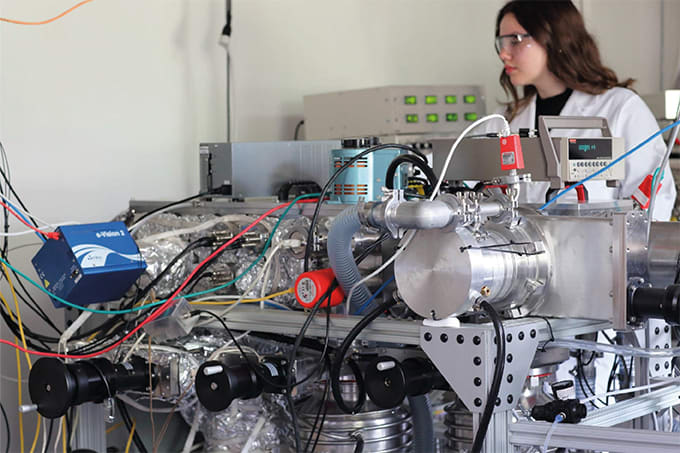Who: Agilent Technologies and Florida International University (FIU) What: A collaboration between Aglient and FIU’s Department of Chemistry and Biochemistry and International Forensics Research Institute (IFRI) to identify and characterize designer drugs using advanced chromatography and mass-spectrometry systems.
Why: Designer drugs are synthesized derivatives of known illicit drug compounds that intentionally circumvent existing immunoassay drug-screening practices but produce similar ‘recreational’ effects. Routine methods are “unable to detect most of the hundreds of individual designer drugs that have been identified,” according to Anthony DeCaprio, director of IFRI’s Forensic & Analytical Toxicology Facility. How: The team will develop advanced analytical methods using LC-QQQ-MS/MS, LC-QTOF-MS, GC/MS and GC/MS/MS for fast, accurate identification of designer substances in both ante- and post-mortem specimens, as well as expand the university’s tandem mass-spectral library to approximately 300 designer drugs.
Who: US Department of Justice and National Institute of Standards and Technology (NIST) What: The establishment of a National Commission on Forensic Science – part of a new initiative to strengthen and enhance the practice. Why: "Forensic science is an essential tool in the administration of justice and needs to be continually evaluated as science progresses," said Deputy Attorney General James M. Cole. How: The Commission will have 30 members, comprising forensic scientists, academic researchers, prosecutors, defense attorneys and judges. It will be charged with developing forensic policy guidance for the Attorney General and will also consider guidance on practices for federal, state and local forensic science laboratories developed by groups of forensic science practitioners and academic researchers administered by NIST.
Who: NASA and Ionicon What: Researchers on NASA’s $30 million DISCOVER-AQ mission are using Ionicon’s new real-time trace gas analyzer to measure atmospheric air pollution. Why: To understand more about air quality by using satellite-based Earth observations. The long-term aim is to predict air quality and reduce pollution. To do so, it is necessary to monitor how pollutants are vertically distributed in the atmosphere. “Satellite sensors have a hard time distinguishing air pollution that is close to the ground from the one that is higher aloft,” said instrument development project leader Armin Wisthaler who works at the Institute for Ion physics & Applied Physics, University of Innsbruck. “In this effort, NASA has put some of the most sophisticated air pollution monitors on two of its research aircraft. The cooperation with Ionicon has put us at the forefront of research”. How: To capture data, the aircraft will fly low-altitude spiral profiles from 15,000 feet down to 1,000 feet above ground level, and sample air along agricultural and traffic corridors at low altitudes. On board, along with other instrumentation and a selection of beverages and hot snacks, is a new compact proton transfer reaction time-of-flight mass spectrometer (PTR-TOF-MS). Further mission information here.
Who: Schauenburg and Markes International What: The Schauenburg International Group has acquired the majority of the shares of the Markes International Group. Why: “Markes will form a substantial part and a new technology segment within our Electronic Division with great potential and synergies. It will support and complement our efforts as technology and system supplier to the environmental monitoring market,” stated Florian G. Schauenburg, CEO. How: Markes International hopes to benefit from Schauenberg’s 50 years’ experience in sustainable technology investment but assures, “Business as usual”. Its focus, facilities and all employees will remain in place, and the company’s founders, Alun Cole and Elizabeth Woolfenden, will stay on as co-shareholders and leaders of the management team.




